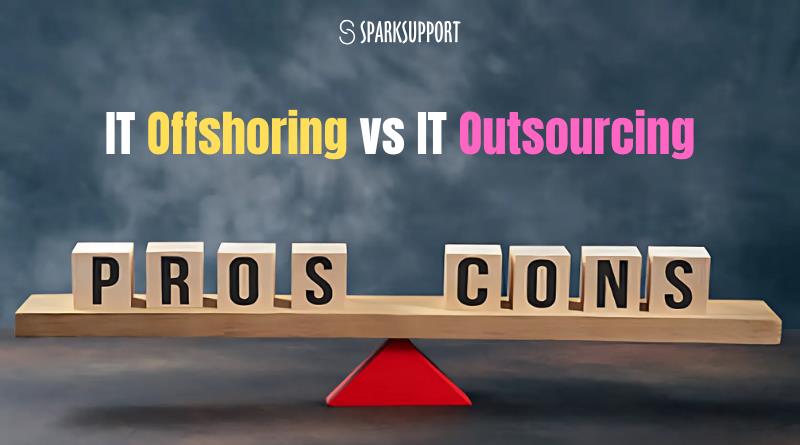Companies are constantly seeking smarter ways to manage IT tasks, lower operational costs, and stay competitive. Two popular strategies that businesses use to achieve these goals are IT Offshoring (Staff Augumentation) and IT Outsourcing. Though they serve similar purposes, they differ significantly in their approach, scope, and execution. Let’s explore what each one means and weigh their pros and cons.
What is IT Offshoring?
IT Offshoring is the practice of transferring IT-related services or projects to a team located in another country. This approach is widely used to reduce costs, access global talent, and benefit from round-the-clock productivity to time zone differences. Whether it’s software development, infrastructure management, or QA testing, offshoring allows businesses to achieve high-quality output at a lower cost.
Pros of IT Offshoring
- Cost Reduction: Hiring from lower-cost regions helps reduce overall IT expenses.
- Time Savings: Offshore teams often come pre-equipped with the tools and expertise needed to get started immediately.
- Flexible Engagement Models: Businesses can opt for time-based, milestone-based, or dedicated team models.
- Access to Specialized Talent: Offshoring opens doors to global experts with niche skills.
- Scalable Operations: Easily increase or reduce team size depending on your project needs.
Cons of IT Offshoring
- Communication Barriers: Language differences and time zones can lead to delays or misunderstandings.
- Data Security Risks: Handling sensitive data across borders may raise compliance and privacy concerns.
- Quality Control Issues: Ensuring consistent quality from a remote team can be difficult without proper oversight.
- Cultural Differences: Different work cultures may affect collaboration and productivity.
- Legal & Regulatory Complexities: Navigating foreign labor laws and business regulations can be tricky.
How SparkSupport Overcomes Offshoring Challenges

At SparkSupport, we bridge the typical gaps in offshoring with transparent communication, dedicated project coordinators, and strict data protection protocols. Our teams are trained to align with your time zone, work culture, and business goals, ensuring smooth and effective collaboration. We follow industry-standard practices for security, compliance, and quality assurance — backed by our ISO 27001:2022 certification, which reflects our commitment to maintaining the highest standards of information security. With SparkSupport, you get all the benefits of offshoring without the usual risks.
What is IT Outsourcing?
IT Outsourcing involves delegating IT tasks to third-party providers, either locally or remotely, without the need to manage internal resources. This model is especially useful for temporary projects, ongoing maintenance, or accessing skills not available in-house. Unlike offshoring, outsourcing doesn’t necessarily involve crossing international borders — it focuses more on handing over responsibility rather than location.
Pros of IT Outsourcing
- Focus on Core Activities: Internal teams can concentrate on strategic initiatives while external partners handle IT operations.
- Access to Expertise: Outsourcing firms offer specialists with deep domain knowledge and ready-made solutions.
- Reduced Operational Overhead: No need for recruitment, training, or infrastructure investment.
- Quick Turnaround Time: Outsourced teams are usually equipped with processes that speed up delivery.
- On-Demand Scalability: Hire as per your immediate needs, whether it’s short-term or project-based work.
Cons of IT Outsourcing
- Limited Control: You may have less influence over daily operations and decision-making.
- Vendor Dependency: Over-reliance on one provider can be risky if the relationship weakens.
- Alignment Issues: Outsourced teams may not fully understand your brand, culture, or long-term goals.
- Unexpected Costs: Sometimes hidden costs or scope changes can increase overall expenditure.
- Security Concerns: Sharing access to systems and data with third parties carries inherent risks.
Conclusion:
Choosing between IT offshoring and outsourcing depends on your project size, internal resources, budget, and long-term vision. Offshoring is ideal for accessing global talent and reducing costs, especially for larger, ongoing projects. Outsourcing works best for companies looking to temporarily extend their technical capacity without the burden of managing people or infrastructure.
Partnering with the right company — like SparkSupport — ensures you get the benefits of either model, minus the risks. Whether you’re looking to hire offshore developers or outsource your IT operations, we have the expertise, structure, and commitment to help you succeed.



